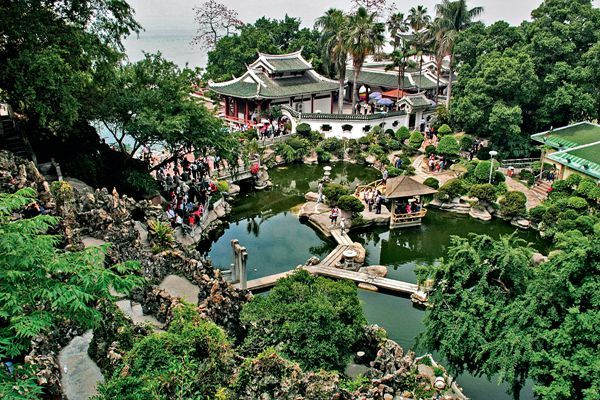The charms of Xiamen
- By Wei Yao
 0 Comment(s)
0 Comment(s) Print
Print E-mail China Today, March 9, 2017
E-mail China Today, March 9, 2017
Xiamen, a sub-provincial city in southeastern Fujian, is one of the first Special Economic Zones in China. The city center is actually an island, known as Egret Island. Xiamen has long been an important port city for commerce and trade, across the strait from Taiwan. It has become one of the most important economic and cultural cities on China's southeast coast, and along with Quanzhou and Zhangzhou forms the "Hokkien Golden Triangle."
Xiamen is a famous tourist destination because of the city's beautiful environment combined with the unique culture of southern Fujian. Young people are particularly attracted by the gorgeous coastline and Gulangyu Island, which is known for its colonial architecture. For many Chinese tourists Xiamen is the number one romantic travel destination.
Long History
In Chinese, Xiamen means "the door to the mansion." Although the history of Xiamen dates back to the third century, it had no administrative significance until 1387 when the first Xiamen City was built. From then on Xiamen was documented in the history books.
Xiamen started to become important in the late Ming and early Qing dynasties (towards the end of the 16th century). Zheng Chenggong was a Ming Dynasty general based on Xiamen port, and he aggressively developed overseas and coastal trade in order to raise money and provisions for his army. After the fall of the Ming Dynasty, Xiamen and Jinmen became important bases for Zheng's fight against the Qing Dynasty and his efforts to recapture Taiwan from the Dutch colonialists. After the Opium War, Xiamen, together with Guangzhou, Shanghai, Ningbo, and Fuzhou, was forced to become an open trading port and was one of the earliest cities in China to open up trade with the outside world.
|
Shu Zhuang Garden is the most famous private residence on Gulangyu. |
After the People's Republic of China was founded in 1949, the Kuomintang retreated to Taiwan. In an attempt to enforce the One-China Policy in 1958, exchanges of fire (commonly referred to as the Second Taiwan Strait Crisis) occurred between Xiamen and Jinmen. Afterwards the People's Liberation Army continued to shell Jinmen regularly until 1979, when a ceasefire was declared. The end of the 21-year-long bombardment was marked by the formal establishment of diplomatic relations between China and the U.S.
After China adopted the policy of reform and opening-up, a Special Economic Zone was set up in Xiamen, making it one of the first SEZs in China. The 21st century has seen the creation of a National Pilot Zone for Overall Reform (a "new special zone") and a Pilot Free Trade Zone in Xiamen. Now Xiamen showcases cooperation between emerging industry on the Mainland and Taiwan's modern service industry, as well as being an international center for shipping in Southeast Asia and a cross-strait regional financial service center and trading center.






